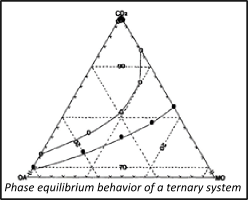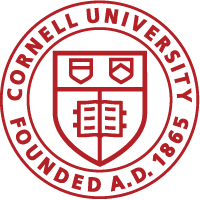

Food systems encompass a wide range of multi-component, multi-phase, heterogeneous biological materials. The control and predictability of their behavior plays a major role in the design of processes for efficient manufacture of better quality products. Yet, despite numerous research investigations over the last several decades, our understanding of the role of various constituents in the structure-property relationship of food remains largely empirical. Non-equilibrium processes like extrusion, drying, freezing, baking, etc. experiencing constant changes in energy and phases pose additional constraint on the time- and space-dependent prediction of their behavior during manufacturing and storage.
Moreover, the rules for non-equilibrium thermodynamics of inhomogeneous systems, like foods, are not well-established. These rules depend on the reaction rates of each component of the system; the high complexity of food systems often leads to instabilities and fluctuations in the math. Engineering intuition, trial and error and rules of thumb are still used in design of many operations which often do not perform as expected. We have evaluated and continue to work on both the equilibrium and non-equilibrium processes and properties as they relate to the role of water in stability of foods. We have also conducted experimental measurements and developed correlations and models for viscosity, diffusion coefficients and phase equilibria of selected binary, ternary and multicomponent systems. Modeling multicomponent systems remains a challenge and depends on the parametric effects of the selected properties. Our focus has been on the diffusivities and viscosities of lipid-rich and supercritical carbon dioxide (SC-CO2)-rich phases and distribution of the components in the two phases. Though temperature and pressure dictate the solubility and distribution of components in the two phases, we are interested in using the density as a scaling factor in new correlations.
Selected Relevant Publications
- Khanitta R., Wagner, M. E. and Rizvi, S. S. H. 2011. Properties of yeast free bread produced by supercritical fluid extrusion (SCFX) and vacuum baking. Innovat Food Sci. Emerg. Technol. 12: 542–550.
- Chen, K-H. J. and Rizvi, S.S.H. 2006. Measurement and prediction of solubilities and diffusion coefficients of carbon dioxide in starch-water mixtures at elevated pressures. J. Polymer Sci. Part B: Polymer Physics 44: 607-621.
- Hicsasmaz Z. and Rizvi S.S.H. 2005. Effect of size and shape on modulus of deformability. LWT – Food Sci. Technol.: 38:431-435
- Tuan, Dang Quoc, Zollweg, J. A., and Rizvi, S. S. H. 1999. Concentration dependence of the diffusion coefficient of lipids in supercritical carbon dioxide. Ind. & Eng. Chem. Res. 38: 2787-2793.
Zou, M., Yu, Z.R., Rizvi, S.S.H. and Zollweg, J.A. 1999. Fluid-liquid equilibria of ternary systems of fatty acids and fatty acid esters in supercritical carbon dioxide. J. Supercrit. Fluids 3: 85-90.
